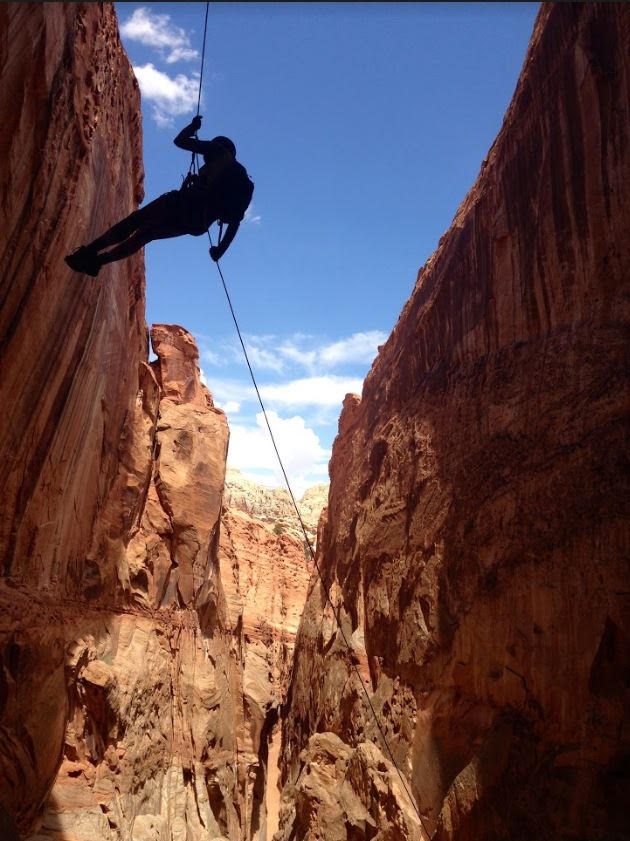
Canyoneering is a growing recreational sport on the Colorado Plateau. It often requires scrambling and climbing through tight, rugged canyons. It may involve swimming, rappelling, or other technical rope work. Please use care during canyoneering trips, including during approaches and exits, as delicate plants, fragile biological crust, and other sensitive park resources exist in many off-trail areas and within many canyons. Small group sizes should be considered for any backcountry travel for the safety of participants as well the protection of park resources. See below for group size limits. Information on Capitol Reef canyoneering routes can be found on various websites and in other publications. Search the internet for details. ClosuresPlease note, several canyons and routes close seasonally each year for the protection of sensitive natural resources. For 2025 -- effective April 1 through August 31, 2025, the following routes are closed:
Rock TypeThe multiple rock layers found at Capitol Reef offer a diverse canyon environment. Many popular canyoneering routes pass through the Navajo and Wingate sandstone formations. Drainages within the Wingate Sandstone often follow natural vertical fracturing and form deep canyons with long drops and tight vertical canyon walls. Canyons within the Navajo Sandstone tend to be shallower and typically produce tight slots, potholes, and shorter drops. Canyoneering Leave No TraceThe following 15 minute video provides tips and best practices for canyoneering on the Colorado Plateau.
Visit our keyboard shortcuts docs for details
Follow rangers as they descend deep into sandstone canyons on an epic adventure. Along the way, they'll show you how to plan ahead, canyoneer safely, and demonstrate minimum impact practices for Leave No Trace. PermitsPermits are required for canyoneering. Free day-use permits can be obtained in person at the visitor center or via email. Please review all rules and regulations prior to filling out or requesting a permit. A separate permit is required for each canyoneering route. For example, Wife 1 and Wife 2 are two separate routes and require two separate permits. If canyoneering for multiple days, submit a separate email for each day. Email care_permits@nps.gov for a canyoneering permit. Use the following format: Subject: Name of canyoneering route and date you will be canyoneering. Email Body:
If you plan to camp overnight as part of a canyoneering trip, you are required to obtain a free backcountry permit, available at the visitor center. Restrictions and ConcernsFor the protection of park resources, canyoneering groups are limited to a maximum of eight people, with some exceptions for certain routes near the Fruita area. View page 5 of the Superintendent's compendium for information about these exceptions. Capitol Reef is a clean canyoneering area. Minimum impact techniques that do not damage or destroy rock or other park resources are required:
Safety
|
Last updated: August 6, 2025
